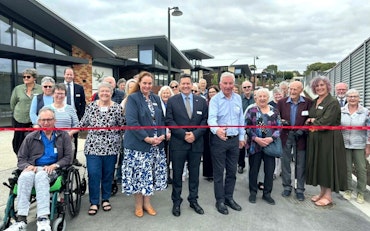Financial sustainability of the aged care sector continues to decline
The latest report from StewartBrown, a chartered accountancy firm, has revealed that the aged care sector is continuing its downward trajectory of financial unsustainability, putting older Australians at risk of losing necessary supports and services.
![<p>With so many aged care providers running at a loss, it puts older Australians services and supports at risk. [Source: iStock]</p>](https://agedcareguide-assets.imgix.net/news/articles/news/articles/28_6_2022-aged-care-sector.jpg?fm=pjpg&format=auto&w=550&q=65)
With so many aged care providers running at a loss, it puts older Australians services and supports at risk. [Source: iStock]
Many nursing homes and home care services are at risk of closure or a reduction in service delivery due to ongoing financial issues.
This report, released last week, has found that around two-thirds of aged care providers (64 percent) operated at a loss over the last nine months to March this year, and 58 percent of home care providers operated at a loss in the 2021 financial year.
Additionally, residential aged care facilities were losing $12.85 per resident in an aged care bed in March of this year, and this was estimated to increase over another three months to $15.59 by the end of June.
StewartdBrown collected data from 1,283 aged care facilities (over 47 percent of the residential care sector), 58,314 Home Care Package providers (more than 29 percent of the home care sector), and 285 approved provider organisations (over 33 percent of the residential sector) to inform this report.
Interim Chief Executive Officer (CEO) of the Aged & Community Care Providers Association (ACCPA), Paul Sadler, says this data confirms ACCPA member feedback of increasing financial pressures.
“Based on these figures many providers could be forced to leave aged care unless there is additional funding to allow providers to meet the increasing costs of providing quality care and support,” explains Mr Sadler.
“It is clear that aged care workers need a significant pay rise but without additional support, aged care providers will be unable to attract more workers and to realise improvements in the quality of care.”
Mr Sadler says that ACCPA has approached the new Federal Government about two solutions that could assist with the immediate problem.
The solutions include an indexation adjustment to increase subsidies to providers and legislation to introduce an independent pricing authority, as recommended by the Royal Commission into Aged Care Quality and Safety.
StewartBrown also outlined that to prevent more homes from closing and reduced service delivery of home care, particularly in regional areas, the Government needs to release an emergency funding package to ensure home and service viability until appropriate funding reforms are implemented.
Mr Sadler is looking forward to working with the new Minister for Health and Aged Care, Mark Butler, and Minister for Aged Care, Anika Wells, on practical solutions to maintain important aged care and support services for older people.
The former Federal Government previously rejected the Royal Commission’s recommendations to increase the level of indexation of subsidies for providers.
The indexation of subsidises for the 2021 to 2022 financial year was 1.1 percent, which did not cover last year’s Award wage increase of 2.5 percent and a 0.5 percent increase to the Superannuation Guarantee.
With the recent increase to the minimum wage and Award wage earlier this month, Mr Sadler is concerned this could lead to more financial unsustainability in the sector.
“We are expecting an even bigger gap this year between the increase in wage costs and indexation unless the Government adopts the Royal Commission recommendations 110 and 111 to increase indexation,” explains Mr Sadler.
“To ensure more robust and evidence-based funding can be implemented from July 2023, the Government must also legislate the expansion of the functions of the Independent Health and Hospital Pricing Authority to include aged care, consistent with the Royal Commission’s recommendation on independent pricing.”
Recommendations 110 and 111 of the Aged Care Royal Commission included provisions that any increase to the minimum wage and Award wage would see subsidies for residential care and home and community care indexed accordingly.
To view the full report on the current sustainability of the sector, head to the StewartBrown website.










